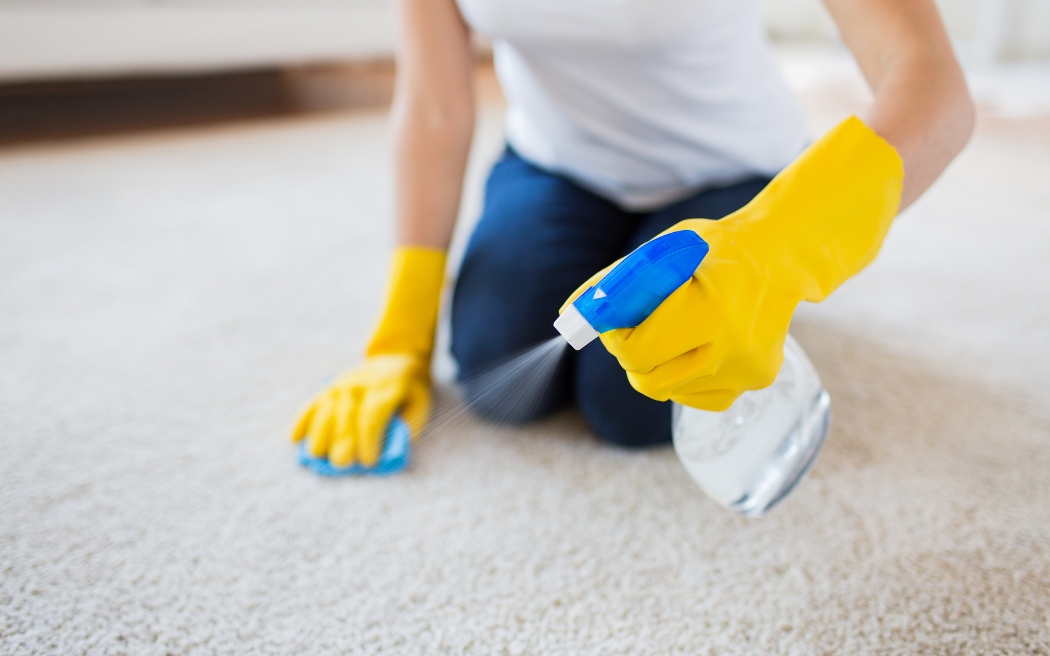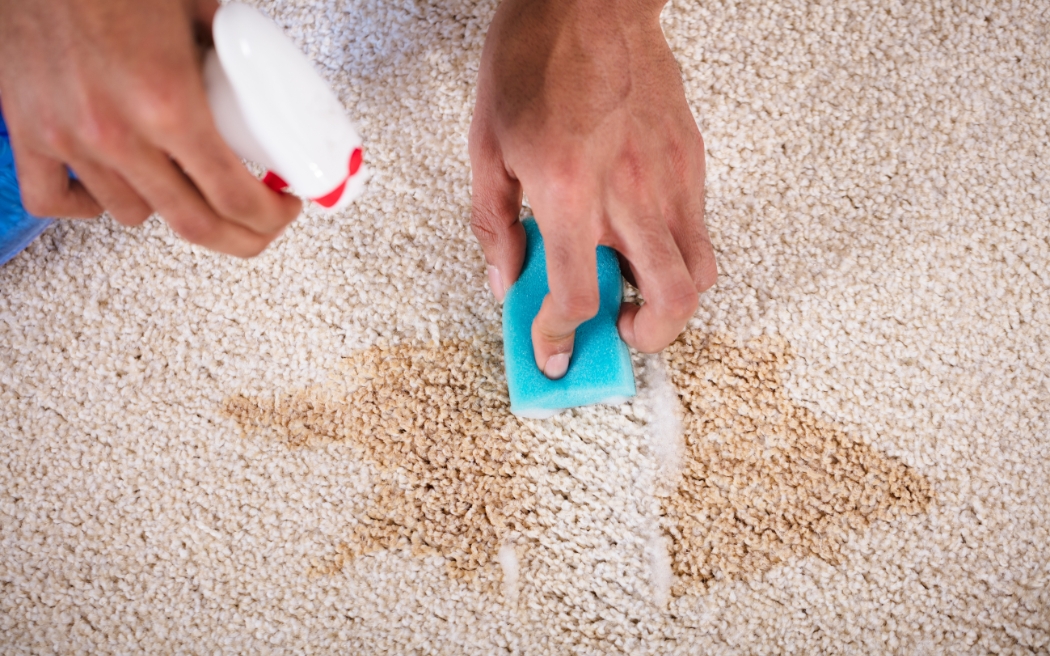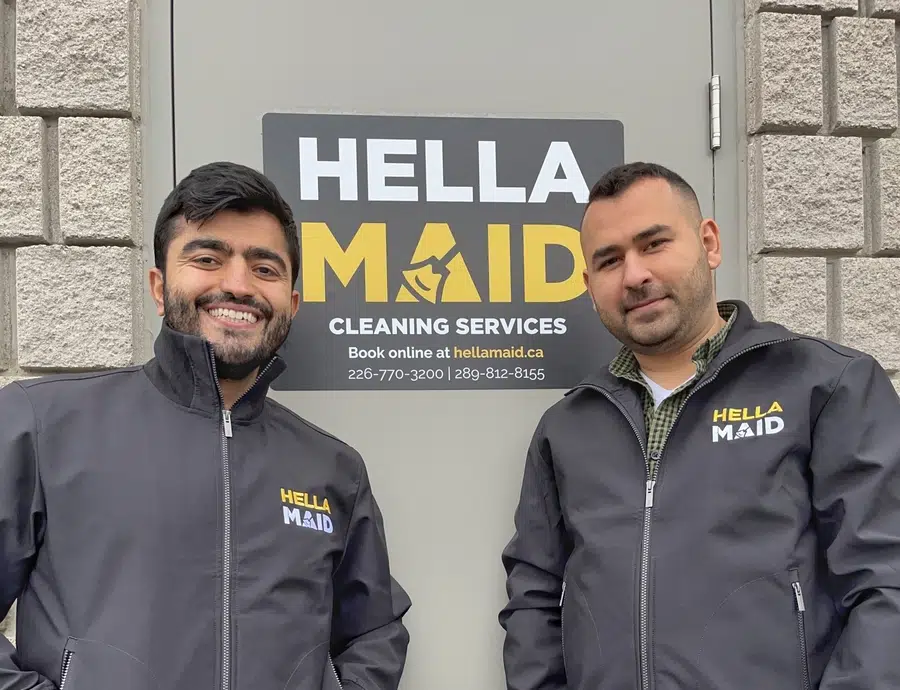Keeping your carpets clean and fresh is essential for maintaining a healthy home environment. While there are many cleaning solutions available, bleach is often overlooked as an effective option for tackling tough carpet stains. Aside from cleaning floors with bleach, you may also do the same for some types of carpet. In this blog post, we’ll explore the benefits and precautions of cleaning carpet with bleach, along with step-by-step instructions for safe and effective use.
Using Bleach on Cleaning Carpets
Before diving into the cleaning process, it’s crucial to understand the role of bleach in carpet cleaning. Bleach is a powerful disinfectant and stain remover that can effectively eliminate bacteria, mold, and stubborn stains from carpets. However, it’s essential to use bleach with caution, as it can cause damage to certain types of carpets and fabrics.
Precautions and Safety Measures
When using bleach for carpet cleaning, it’s crucial to take proper precautions to ensure your safety and protect your carpet. Here are some safety measures to keep in mind:
- Ensure proper ventilation in the area where you’ll be cleaning with bleach. Open windows and doors to allow fresh air to circulate and prevent the buildup of fumes.
- Wear gloves and protective eyewear when handling bleach to prevent skin and eye irritation. Additionally, consider wearing a mask to avoid inhaling bleach fumes.
- Before applying bleach to the entire carpet, test it in a small, inconspicuous area to check for colorfastness and potential damage.
- Always dilute bleach with water according to the manufacturer’s instructions. Using undiluted bleach can damage the carpet fibers and cause discoloration.
Step-by-Step Guide to Cleaning Carpet with Bleach
Now that you’ve taken the necessary precautions, here’s a step-by-step guide to cleaning your carpet with bleach:
- In a bucket, mix one part bleach with four parts water. Stir the solution thoroughly to ensure it’s well mixed.
- Apply a small amount of the bleach solution to an inconspicuous area of the carpet and wait for a few minutes. If there’s no color change or damage, it’s safe to proceed.
- Using a spray bottle or sponge, apply the bleach solution directly to the stained areas of the carpet. Avoid saturating the carpet, as excess moisture can lead to mold and mildew growth.
- Using a clean cloth or paper towel, gently blot the stained area to absorb the bleach solution and lift the stain. Avoid rubbing or scrubbing, as this can damage the carpet fibers.
- After removing the stain, rinse the area thoroughly with clean water to remove any remaining bleach residue. Use a wet-dry vacuum or clean cloth to extract excess moisture from the carpet.
- Allow the carpet to air dry completely before walking on it or replacing furniture. Use fans or open windows to speed up the drying process.
Choosing the Right Carpet Type for Bleach Cleaning
Before using bleach to clean your carpet, it’s essential to ensure that your carpet type is suitable for this method. While bleach can be effective for certain types of carpets, it’s not suitable for all materials. Here’s a quick guide to help you determine if your carpet is compatible with bleach cleaning:
- Synthetic Fibers: Carpets made from synthetic fibers such as nylon, polyester, or olefin are generally safe to clean with bleach. These materials are more resistant to bleach and less likely to discolor or damage.
- White or Light-Colored Carpets: Bleach is most effective on white or light-colored carpets. Avoid using bleach on dark-colored carpets, as it can bleach or fade the color.
- Non-Porous Carpets: Carpets with non-porous surfaces, such as loop pile or low-pile carpets, are better suited for bleach cleaning. Avoid using bleach on high-pile or shag carpets, as the bleach solution may not penetrate effectively.
Aftercare and Maintenance
After cleaning your carpet with bleach, it’s essential to take proper aftercare steps to maintain its appearance and prolong its lifespan. Here are some tips for aftercare and maintenance:
- Vacuum your carpet regularly to remove dirt, dust, and debris that can accumulate over time. This helps prevent stains and extends the life of your carpet.
- Deal with spills and stains promptly to prevent them from setting into the carpet fibers. Blot spills with a clean cloth and use a mild detergent or carpet cleaner for spot cleaning.
- Schedule professional carpet cleaning at least once a year to deep clean and refresh your carpets. Professional cleaners have the expertise and equipment to remove deep-seated dirt and stains effectively.
Cleaning carpet with bleach can be an effective solution for removing tough stains and disinfecting your home. By following the proper precautions and techniques outlined in this guide, you can safely and effectively clean your carpets with bleach. Remember to test the bleach solution in an inconspicuous area and take appropriate safety measures to protect yourself and your carpet. With regular maintenance and care, your carpets will stay clean, fresh, and looking their best for years to come.





























